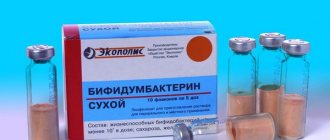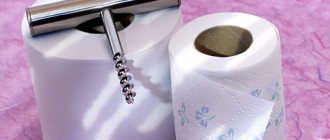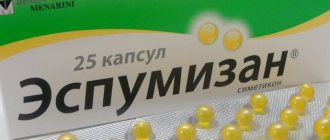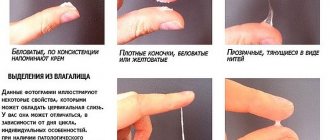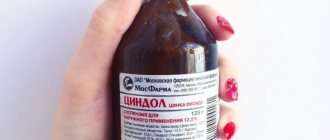Unlike adults, the baby does not know how to blow his nose, so nasal congestion is a serious and often recurring problem for him.
Because of this, the baby’s sleep is disturbed and his appetite disappears. The accumulation of mucus contributes to the development of infection, and breathing through the mouth with a frequent runny nose can even cause a malocclusion in a newborn.
Therefore, young parents, in order to help their baby with rhinitis, should at least know how to suck out snot with a pear or other means intended for this.
Types of nasal aspirators
There are several types of special devices (aspirators) for suctioning snot from babies. A few words about each of them:
- Rubber syringe, or bulb. The bulb aspirator is a simple and trouble-free device that has been known for a long time. It may have different attachments: rubber or plastic, thin or wider, equipped with a limiter so that the tip does not penetrate too deeply into the baby’s nasal passages.
- Mechanical aspirator. This is a special tube, one end of which is directed into the baby’s nostril, and through the opposite end, his mother draws in air through her mouth, thereby removing snot from the nose. The advantages of such a device are fairly reliable protection of the baby’s delicate mucous membrane from injury due to the mother’s regulation of the force of mucus suction.
- Electronic mucus suction device. It works very simply. It is enough to bring the tip of the aspirator to the baby’s nasal passage and press a special button to relieve the baby of nasal congestion. In this case, you can also moisten it and inject an aerosol.
- Vacuum device. In this case, a special vacuum cleaner is already provided, which plays the role of a nozzle suction device. Some users fear that the device is too powerful and could cause harm to the baby, but the regulation of the suction force is provided by the design of this device so that it is harmless and does its job in just a couple of tens of seconds. Additional functions are also provided here.
Many parents cannot decide which aspirator for newborns is best to buy at the pharmacy. A brief overview of the main types of aspirators will help you understand which device is more convenient for you.
How to potty train a one year old child? You will find useful tips for parents here.
The basic rules for using aspirators are outlined in this material.
Is it possible to do a laxative enema for constipation?
Constipation in adults and children is an unpleasant and quite dangerous condition. Persistent defecation disorder is characterized by the absence of stool for more than two days or incomplete bowel movement. The accumulation of feces leads to a feeling of heaviness, symptoms of dyspepsia, and gradual intoxication of the body. Objective well-being deteriorates significantly, appetite disappears, nervousness and irritability arise, and sleep is disrupted. An enema for severe constipation at home is designed to help quickly cleanse the intestines.
Causes of constipation:
- diet low in plant fiber;
- minimizing daily fluid intake;
- regularly holding bowel movements;
- intestinal obstruction of various origins;
- irritable bowel syndrome;
- hard fecal stones (typical for elderly patients);
- psychological fear of defecation due to anal fissure, paraproctitis, hemorrhoids;
- pathology of intestinal innervation;
- depression.
https://youtu.be/VBhcz3A2Qh8
Rules for using a nasal aspirator
To make your baby's nasal breathing easier, you need to know how to suck out snot with a blower. This procedure is not complicated, but due to the fact that children do not like such manipulations and often resist them, it requires some skills:
- To safely remove mucus from a baby's nose, preliminary preparation is needed. It consists of rinsing the nose with a baby saline solution, which is sold at the pharmacy. This could be: aquamarine, sea water, aquamaris or another saline solution appropriate for the baby’s age. Any pharmacy will recommend it to you. As a last resort, you can prepare it yourself by dissolving a spoonful of salt in half a liter of warm water. But it is still better to give preference to a medical sterile solution.
- The solution is injected in a small stream into each nostril alternately using a pipette, a small rubber bulb or a five-milliliter syringe without a needle. To prevent the baby from choking, you need to hold him upright and make sure that his mouth is open all the time. If the child nevertheless chokes on liquid, then you should put him on his tummy, placing his hand under him, and lightly pat him on the back.
- You can rinse your nose using decoctions of medicinal plants - chamomile, sage, calendula, eucalyptus. It is important that the baby is not allergic to these drugs. After this, you need to wait a couple of minutes until the mucus softens and the baby calms down. You can also carefully remove nearby crusts from the nostrils using a cotton swab.
- The rubber bulb is squeezed so that the air comes out of it. Then, inserting the tip of the aspirator alternately into each nostril, suck out the mucus. Before blowing snot out of the second nostril, the tip is thoroughly cleaned, and the air is removed from the bulb again.
Young parents should know that at first the baby will resist the treatment procedure. But, if she causes him minimal inconvenience, he will subsequently get used to her. After the manipulation, carefully clean the used aspirator from the contents removed from the nose. The pear is stored in a special place and must be sterilized before the next use.
Even the simplest device - a rubber bulb - requires precise actions. When using other nasal aspirators, you should study the instructions for them.
Description of compositions
The home method of cleansing using solutions should be selected in accordance with the doctor’s recommendations. Cleansing is carried out according to this recipe.
Salt and soda
The solution is made in the following proportion: 10 g table salt / 100 g water (10%). Use 20-30% solutions based on Mg and Na sulfate.
The water is heated to a maximum of 38 0C. After the procedure, it is recommended to lie down for half an hour. Contraindications: peptic ulcers, cracks, acute inflammatory reactions and swelling.
Soda solution is prescribed to relieve pain when stool has a high level of acid content. The proportion of the solution is 1.5 l. water / 50-60 g of soda at a temperature of 37-38 0C.
Herbal
Traditional medicine gives three ways to prepare herbal infusions. It is recommended to cook in enamel pans, prepare the collection yourself (away from the highways, railways) or buy it at a pharmacy. Be careful when using herbs - allergic reactions are possible!
Melissa infusion against spasms: 3 g of plant per glass of boiled water. Let it brew for half an hour. Temperature 37-38 0C.
Decoction of flaxseed (oats, barley) and mallow leaves: 1 tbsp. l. / 1 l. water, bring to a boil (10 minutes) and strain. Add ingredients: 1 tbsp. l. salt, 2 tbsp. l. oils Used for frequent constipation.
Chamomile decoction: 6 tbsp. l. / 0.5 l. boiling water, place in a water bath for 15 minutes. Strain and squeeze out the resulting raw materials. Add an additional 0.5 liters. and 2 tbsp. l. honey. An excellent remedy for combating inflammatory processes and harmful bacteria.
Oil
Used to achieve emptying of feces and gases in the large intestine. The enema used lasts for a long time. After the procedure, it is better to lie down for up to 8 hours. Therefore, cleanse before bed.
Oil affects the intestines mechanically (softening of stool) and chemically (breakdown of matter, appearance of soap). The substance is heated to the maximum limit in an amount of 100-200 ml.
An oil enema is recommended as a softening agent. There are general contraindications.
Emulsion
Composition of the solution: 0.5 ml of chamomile infusion, 1 yolk, 1 tsp. soda powder and 2 tbsp. l. Vaseline (glycerin). Emptying will occur in 30 minutes.
Potassium permanganate solution
Proportion: 1.5 l. water (36-38 0C) / 4-5 crystals of permanganate K. It is dangerous to use a highly concentrated solution. A remedy is prescribed to eliminate diarrhea and hemorrhoids (pay attention to the presence of bleeding). Potassium permanganate can dry out the intestinal mucosa and cause irritation.
Esmarch's mug can handle large volumes of solutions so as not to cause irritation of the gastrointestinal tract by frequent use of an enema.
https://youtu.be/lRoBZq_-iRk
Precautionary measures
When using a bulb to suck out snot in newborns, you need to be extremely careful and precise in your movements.
Parents cannot always calculate the force of pressure and predict the baby’s reaction to it.
But its mucous membranes are extremely sensitive, and any incorrect movement can injure the nose until bleeding occurs.
If you press too hard on the bulb or tip, the device may become suctioned to the nasal passage and cause injury. And when rinsing the nose with saline, the child may cough, and infection from the mucous membranes can enter the respiratory tract.
To avoid causing harm to the baby during this procedure, it is better to use a soft tip or a special limiter. When blood appears, you need to tilt the baby's head and pinch the wing of the nose.
If the baby has choked on liquid, you should lift him up and gently pat him on the back, thereby removing liquid from the respiratory tract.
Folk recipes
You can prepare microenemas for constipation yourself. For this purpose, food, pharmaceutical preparations, and medicinal plants are used. Let's first talk about options for preparing cleansing microenemas:
- coffee. You need to grind three tablespoons of natural coffee in a coffee grinder. The resulting powder is poured into a glass of distilled water and placed on low heat for five minutes. Then the heat should be increased and the product boiled for ten minutes. Cooled and filtered coffee is ready for use. Such enemas help remove toxins and have a beneficial effect on the functioning of the gallbladder;
- honey Add one spoonful of lemon juice and liquid honey to 20 ml of boiled warm water. All ingredients should be thoroughly mixed to obtain a homogeneous mass;
- starchy You can use potato, rice, corn or wheat starch. Five grams of the product are diluted in 125 ml of distilled water. The liquid is put on fire and boiled. It should be simmered over low heat and gradually add another 125 ml of water.
Advice from experts when carrying out the procedure for suctioning snot from a baby
Dr. E. Komarovsky and other pediatric doctors recommend using syringes or other aspirators several times a day for the best effect: in the morning after the baby wakes up, before feedings and bedtime. This will improve the child’s rest and allow him to eat well.
If you press too hard on the device or insert it deeply into the nose, injuries to the baby’s mucous membrane are common.
Therefore, when doing procedures to remove snot from a stuffy nose, there is no need to rush.
Dr. Komarovsky believes that it is permissible to use aspirators, but to get rid of mucus it is better to use special devices with soft edges and devices that do not allow them to penetrate deep into the nostrils.
At the same time, you must not forget about a sense of proportion and avoid shaking your hands.
The doctor reminds that liquid nasal contents flow out spontaneously or are swallowed, flowing down the back wall of the pharynx. It is very difficult to fight thick snot. Even the most modern aspirators are often powerless here. Therefore, it is important to create conditions that minimize the need for aspirators.
To do this, the following preventive measures should be taken to prevent the onset of the disease:
- Do not bundle up your baby, dressing him according to the weather.
- Don’t forget to carry out daily hygiene procedures.
- Create an optimal temperature in the nursery (just above 20 degrees) and maintain high humidity.
- Ventilate the room and take your baby for walks regularly.
- If snot appears in your baby, do not allow it to dry out; rinse the nose with saline solution in a timely manner.
It is easier to prevent illness than to fight it. Following basic hygiene requirements will bring more benefits than using the most modern technical means for removing snot.
A runny nose in children is a serious matter and happens quite often. An aspirator is the most convenient device for pumping out mucus and sputum. Read how to use an aspirator for newborns on our website.
How to teach a child to read quickly - an overview of techniques that parents can use is presented at the link.
Sucking snot from children with a bulb or other nasal aspirator is an effective and useful procedure for a sick child. It improves his well-being, normalizes sleep and appetite. But in order for this manipulation to be painless, even the simplest device must be used skillfully and follow the recommendations of specialists.
It is also important to read the instructions supplied with the device. And the best thing is to prevent the baby from getting sick: take care of his hygiene, spend time with him in the air more often, and maintain the optimal temperature and humidity in the children's room.
Solution for infusion
Since we are going to carry out the procedure ourselves, we choose the size of the pear for an adult.
At least 200 ml, otherwise you will have to pour the liquid into the rectum several times. There are a large number of different solutions, the simplest is water. True, this procedure has a minimal therapeutic effect, but it allows you to break through the fecal plug and free the intestinal ampulla.
Some exotic lovers add coffee, lemon juice, or even their own urine. Such radical methods do not suit us; we will do everything the old fashioned way. Using water, which can be diluted with a weak solution of potassium permanganate for a better effect. The intestines have their own microflora, which should not be disturbed if possible.
Carrying out douching at home
If all the instruments are prepared, you need to take the correct posture to easily administer the liquid. For microenemas, it is better to use a syringe, that is, a bulb. If it is necessary to completely cleanse the intestines, an Esmarch mug enema is recommended. The procedure is as follows:
- choose a comfortable position for yourself;
- check if the tip is damaged;
- lubricate the tip with cream or Vaseline;
- insert the instrument to a depth of no more than 10 cm;
- squeeze the bulb so that the liquid is evenly distributed in the rectum;
- give a light abdominal massage.
If you experience a sudden urge to defecate, raise your pelvis above head level. After administering the enema, you must wait 15 minutes before you can go to the toilet. During the procedure, listen to your body. If you feel discomfort, you should stop douching.
The frequency of repetition of the procedure is determined by the result you want to get. For example, the number of therapeutic enema procedures is prescribed by the doctor. When cleansing the intestines for the purpose of weight loss or for prevention, an enema is administered no more than once a week. Frequent procedures can harm the body - this is rectal dysbiosis, microflora disturbance, burns and intestinal trauma. To avoid such violations, it is better to consult a doctor about the number of douching sessions.
Preparatory stage
To administer an enema yourself, you should prepare the following materials:
- douching tool;
- liquid or solution in the required volume;
- Vaseline or baby cream;
- oilcloth.
The composition of the solution depends on what type of enema is used. Before the procedure, the bulb and tip must be washed well in a soapy solution. If you use plain water for douching, it should have a temperature of no more than 35 degrees. If glycerin or olive/sunflower oil is added to the water, then the proportion should be as follows: 1 tbsp. spoon for 0.5 liters of water.
Alternative methods of colon cleansing
For constipation, an enema is a last resort method of bowel movement. I recommend it when straining the muscles of the abdominal wall and perineum is contraindicated, you cannot strain so that the stitches do not come apart (after surgery on the abdominal organs) or a relapse occurs in a chronic anal fissure. If possible, they try to replace the cleansing enema with:
- Laxatives. Before conducting an instrumental examination of the colon, Fortrans is prescribed, an osmotic laxative. The urge to defecate occurs 1 hour after taking the drug. The medicine has contraindications. Before use, consult a doctor.
- Glycerin suppositories. They are most effective for atonic constipation, but are addictive.
- Therapeutic exercise. There are exercises that help restore normal intestinal motility.
- Massage. It is prescribed and carried out by a specialist.
- Nutrition correction. A common cause of stool retention is poor nutrition. In order for the intestines to function properly and cleanse themselves, increase the consumption of foods containing fiber.
If you have stool retention or diarrhea, you should not do a cleansing enema without permission. The cause of any digestive disorders is immediately determined. To do this, contact a gastroenterologist or proctologist.
How often can an adult do it?
Without danger to the intestinal microflora and its physiological peristalsis, it is not recommended to give an enema more than once every two weeks. It is forbidden to use it every day. If you need it more than twice a month, consult your doctor. He will conduct an examination, prescribe additional examinations, select a diet, and give a prescription for laxatives.
Cautions
A homemade enema is not the best option for colon cleansing. During use, mechanical damage to the tissues of the anus and rectum, thermal burns, and excessive stretching of the intestinal walls, even to the point of rupture, cannot be ruled out. Some of the complications pose a direct threat to human life, therefore, unless absolutely necessary, it is not recommended to use an enema from improvised means.
In order to avoid the need for an enema to facilitate bowel movements and cleanse the intestines during constipation, it is recommended to carry out preventive measures. They allow you to normalize stool and include a rational diet and physical activity.
An enema to cleanse the intestines using a syringe is used for diagnostic and therapeutic purposes. It is prescribed to empty the lower part of the large intestine before conducting instrumental examination methods and administering a medicinal enema. Recommended for constipation and for the treatment of diseases of the gastrointestinal tract.
Depending on the temperature of the injected solution, the enema helps relieve spasm of smooth muscles or enhance intestinal motility. But this procedure can be dangerous.
